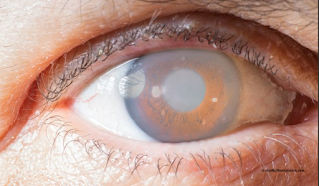Glaucoma
Glaucoma is not a single disease process but a group of disorders characterized by a progressive optic neuropathy resulting in a characterstic appearance of the optic disc and a specific pattern of irreversible visual field defects that are associated frequently but not invariably with raised intraocular pressure (IOP).
Thus, IOP is the most common risk factor but not the only risk factor for development of glaucoma.
Consequently the term ‘ocular hypertension’ is used for cases having constantly raised IOP without any associated glaucomatous damage. Conversely, the term normal or low tension glaucoma (NTG/LTG) is suggested for the typical cupping of the disc and/or visual field defects associated with a normal or low IOP.
Increase intraocular pressure , increase disc diameter, and decrease peripheral vision is called as glaucoma
Classification
Clinico-etiologically glaucoma may be classified as follows:
(A) Congenital and developmental glaucomas
1. Primary congenital glaucoma (without associated anomalies).
2. Developmental glaucoma (with associated anomalies).
(B) Primary adult glaucomas
1. Primary open angle glaucomas (POAG)
2. Primary angle closure glaucoma (PACG)
3. Primary mixed mechanism glaucoma
(C) Secondary glaucomas
PATHOGENESIS OF GLAUCOMATOUS OCULAR DAMAGE
As mentioned in definition, all glaucomas (classified above and described later) are characterized by a progressive optic neuropathy.
It has now been recognized that progressive optic neuropathy results from the death of retinal ganglion cells (RGCs) in a typical pattern which results in characteristic optic disc appearance and specific visual field defects.
Pathogenesis of retinal ganglion cell death
Retinal ganglion cell (RGC) death is initiated when some pathologic event blocks the transport of growth factors (neurotrophins) from the brain to the RGCs.
The blockage of these neurotrophins initiate a damaging cascade, and the cell is unable to maintain its normal function. The RGCs losing their ability to maintain normal function undergo apoptosis and also trigger apoptosis of adjacent cells.
Apoptosis is a genetically controlled cell suicide programme where by irreversibaly damaged cells die, and are subsequently engulfed by neighbouring cells, without eliciting any inflammatory response.
Retinal ganglion cell death is, of course, associated with loss of retinal nerve fibres. As the loss of nerve fibres extends beyond the normal physiological overlap of functional zones. The characteristic optic disc changes and specific visual field defects become apparent over the time.
Optometrist

